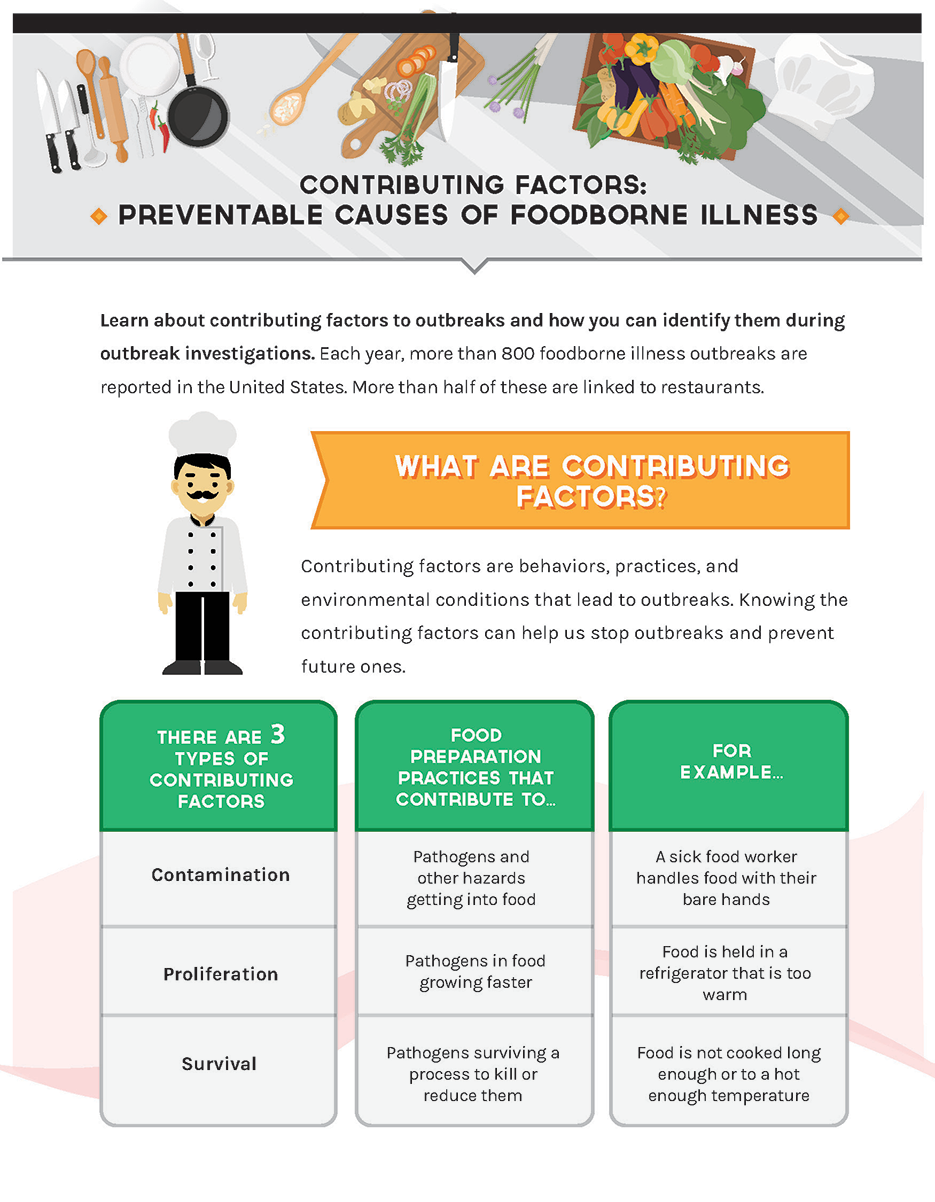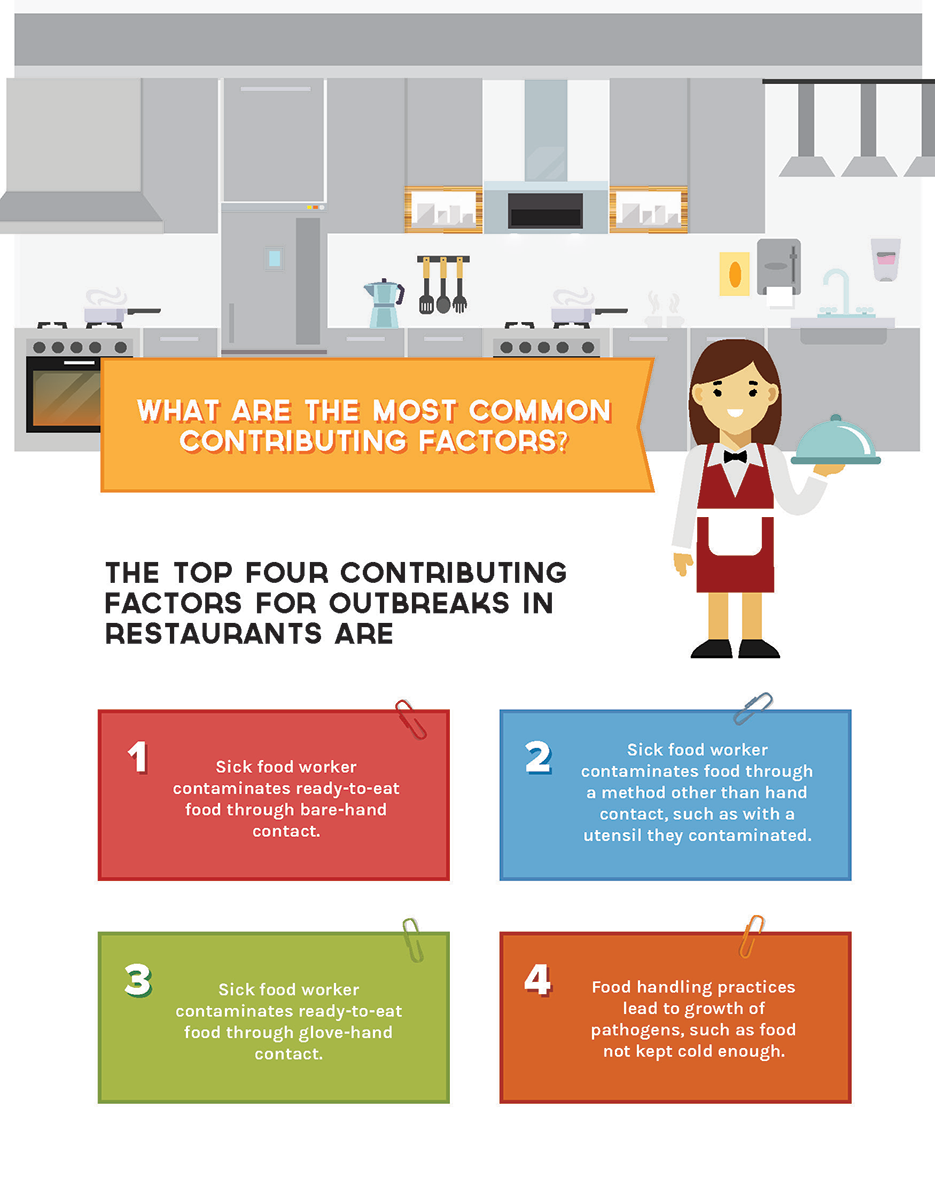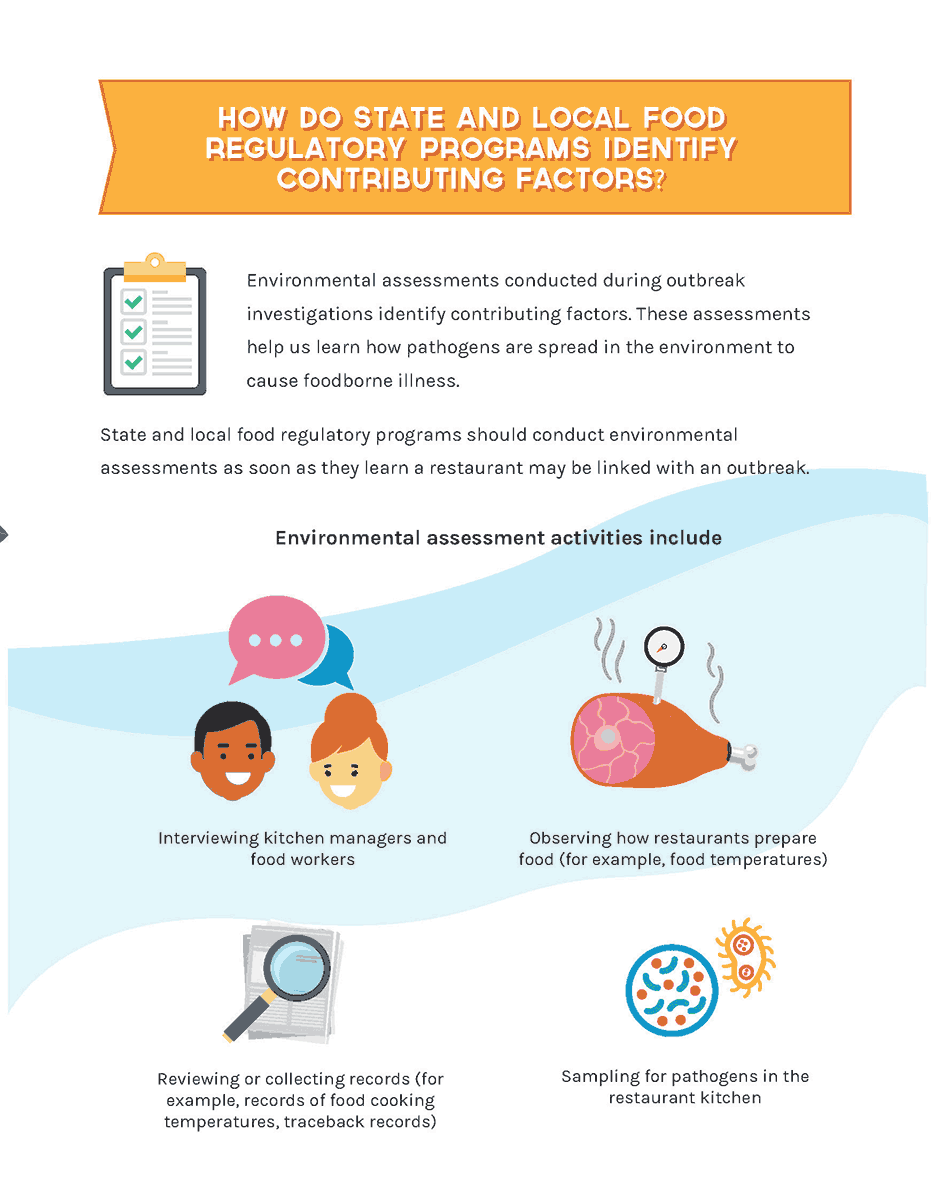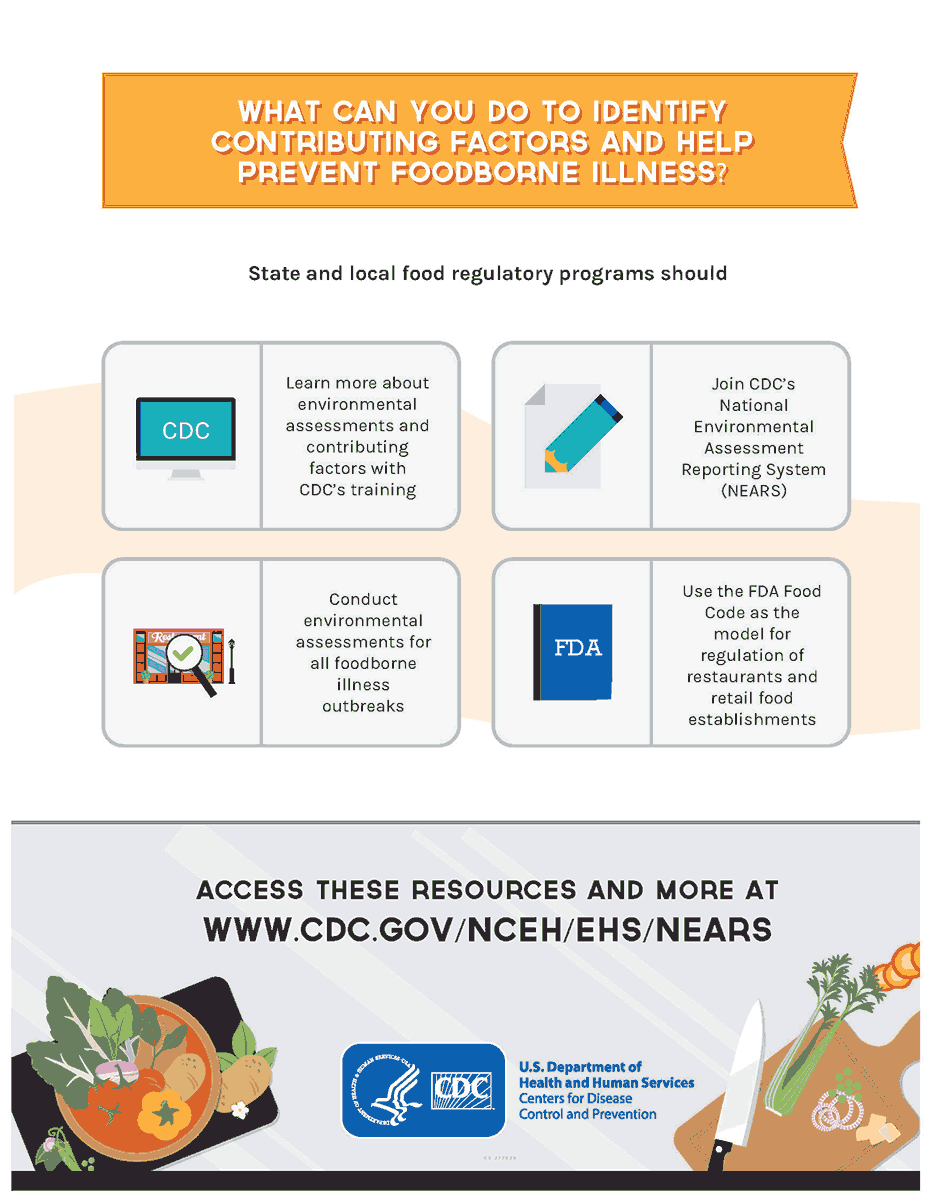Infographic Contributing Factors: Preventable Causes of Foodborne Illness
For a printable version of this infographic, click on the image or select “PDF” from the format menu to the right. You can also access more food safety resources and more factsheets and infographics.




Learn about contributing factors to outbreaks and how you can identify them during outbreak investigations.
- Each year, more than 800 foodborne illness outbreaks are reported in the United States.
- More than half of these are linked to restaurants.
What Are Contributing Factors?
Contributing factors are behaviors, practices, and environmental conditions that lead to outbreaks. Knowing the contributing factors can help us stop outbreaks and prevent future ones.
There are 3 types of contributing factors.
- The first type is contamination (pathogens and other hazards getting into food). A sick food worker handling food with their bare hands is one example of a food preparation practice that contributes to contamination.
- The second type is proliferation (pathogens in food growing faster). Food held in a refrigerator that is too warm is one example of a food preparation practice that contributes to proliferation.
- The third type is survival (pathogens surviving a process to kill or reduce them). Food not cooked long enough or to a hot enough temperature are two examples of food preparation practices that contribute to survival.
What Are the Most Common Contributing Factors?
The top four contributing factors for outbreaks in restaurants are
- Sick food worker contaminates ready-to-eat food through bare-hand contact.
- Sick food worker contaminates food through a method other than hand contact, such as with a utensil they contaminated.
- Sick food worker contaminates ready-to-eat food through glove-hand contact.
- Food handling practices lead to growth of pathogens, such as food not kept cold enough.
How Do State and Local Food Regulatory Programs Identify Contributing Factors?
Environmental assessments conducted during outbreak investigations identify contributing factors. These assessments help us learn how pathogens are spread in the environment to cause foodborne illness.
State and local food regulatory programs should conduct environmental assessments as soon as they learn a restaurant may be linked with an outbreak.
Environmental assessment activities include
- Interviewing kitchen managers and food workers
- Observing how restaurants prepare food (for example, food temperatures)
- Reviewing or collecting records (for example, records of food cooking temperatures, traceback records)
- Sampling for pathogens in the restaurant kitchen
What Can You Do To Identify Contributing Factors and Help Prevent Foodborne Illness?
State and local food regulatory programs should
- Learn more about environmental assessments and contributing factors with CDC’s training
- Join CDC’s National Environmental Assessment Reporting System (NEARS)
- Conduct environmental assessments for all foodborne illness outbreaks
- Use the FDA Food Code as the model for regulation of restaurants and retail food establishments
Access these resources and more at www.cdc.gov/nceh/ehs/nears
- Page last reviewed: August 25, 2017
- Page last updated: September 7, 2017
- Content source:


 ShareCompartir
ShareCompartir